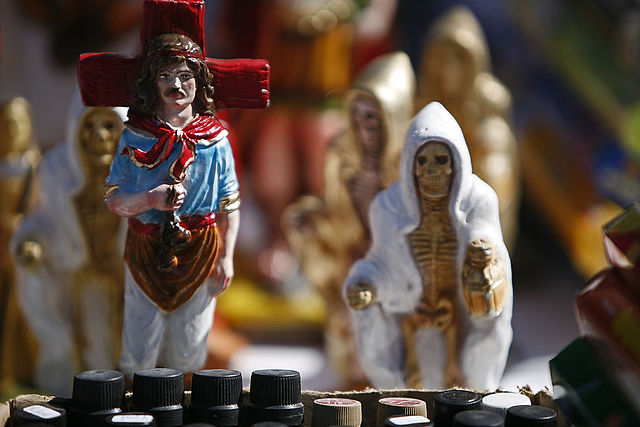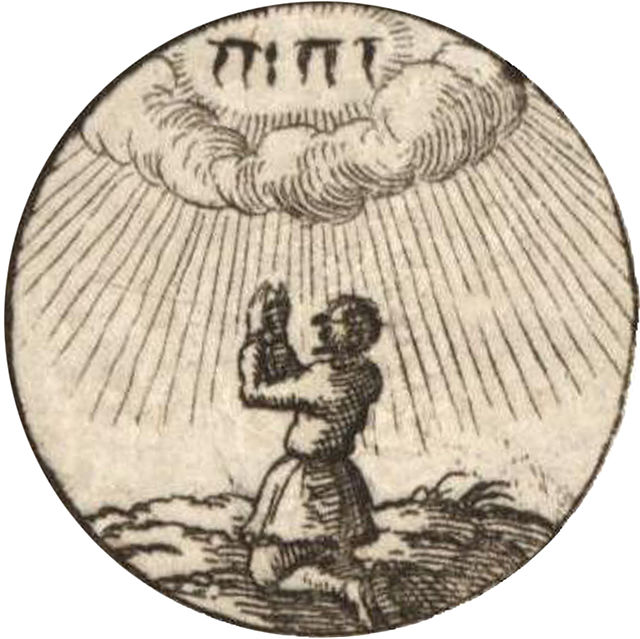Folk saints are dead people or other spiritually powerful entities venerated as saints, but not officially canonized. Since they are saints of the "folk", or the populus, they are also called popular saints. Like officially recognized saints, folk saints are considered intercessors with God, but many are also understood to act directly in the lives of their devotees.
Gauchito Gil (left) and San La Muerte (right), two examples of Argentine folk saints
Image: Excideuil église vitrail choeur (7)
Image: Saint mabena
Image: St Michael, Stanton Harcourt, Oxon Shrine to St Edburg geograph.org.uk 1610457
In Christian belief, a saint is a person who is recognized as having an exceptional degree of holiness, likeness, or closeness to God. However, the use of the term saint depends on the context and denomination. In Catholic, Eastern Orthodox, Anglican, Oriental Orthodox, and Lutheran doctrine, all of their faithful deceased in Heaven are considered to be saints, but some are considered worthy of greater honor or emulation. Official ecclesiastical recognition, and consequently a public cult of veneration, is conferred on some denominational saints through the process of canonization in the Catholic Church or glorification in the Eastern Orthodox Church after their approval.
St Bridget of Sweden pictured with a halo. In Christian iconography, saints may also be depicted with wreaths, palm branches, and white lilies.
A portrait depicting Saint Francis of Assisi by the Italian artist Cimabue (1240–1302)
Saint, 12th century fresco in Staraya Ladoga
"Scripture does not teach calling on the saints or pleading for help from them. For it sets before us Christ alone as mediator, atoning sacrifice, high priest, and intercessor."—A.C. Article XXI.








